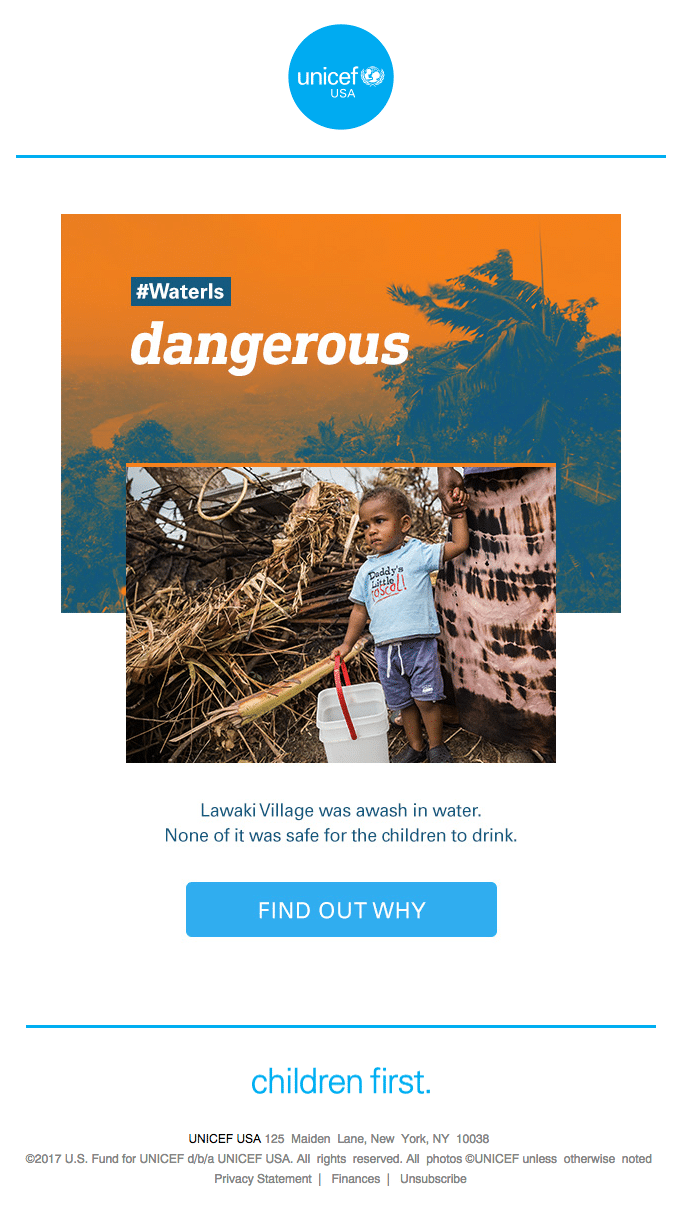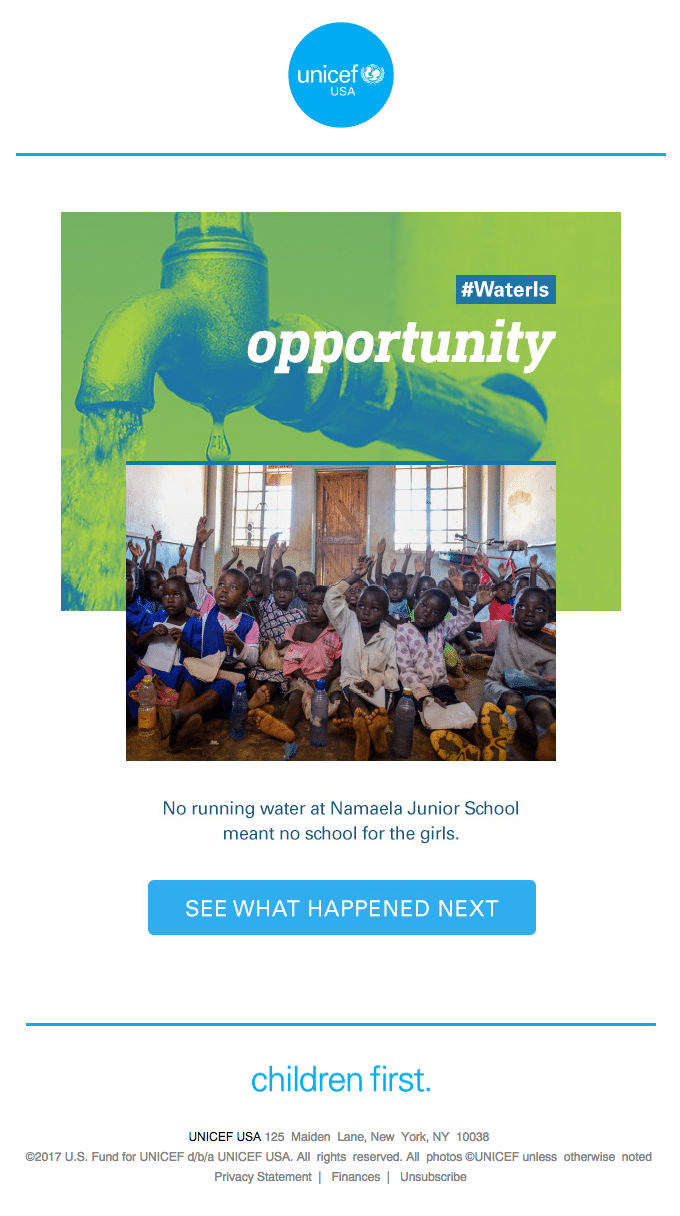Nonprofits have some of the noblest objectives, but the trickiest tasks when it comes to marketing.
While they’re primarily focused on humanitarian efforts and tasks that improve the world through a giving spirit, it isn’t always easy to keep the operation going.
While traditional marketing is largely based around promoting a product while focusing on features and benefits, nonprofits take things in a different direction. Nonprofit marketing is about showing users how they can make a difference.
Rather than trying to get people to purchase a product or subscribe to a service, you’re trying to get them to pledge their support. This can come in the form of one-time or reccurring donations, as well as a focus on community building to create support for future endeavors.
Two of the best tools out there to elicit this type of networking and social participation are email and social media. When you leverage the two together, you increase your chance of success.
Developing a multi-channel marketing process
The best marketing efforts don’t have a central focus—at least when it comes to the channel.
It’s possible to focus on singular topics, events, goals, styles, and objectives across multiple channels. This multi-channel approach isn’t a way of scattering your concentration throughout different avenues. Instead, it’s a way of strengthening your aim toward one set of objectives by diversifying the ways you pursue it.
Email and social media are great choices. In terms of email’s efficiency, it’s a powerful resource even in the field of B2B, where it’s only outranked in influence by colleague recommendations industry thought leaders. That’s a great third-place spot to have.
How does that impact you, as a nonprofit? Often, you’ll have key influencers or popular names in your field play a role in your marketing endeavors. If other sectors with similar strategies find success with email, you can too.
Nonprofits also get their success by word-of-mouth marketing for those who partner with them. Since social media is the modern word-of-mouth tool in the digital world, it’s also an option you should be using.
Advertising revenue for these platforms was at about $51.3 billion last year, with the annual growth rate estimated at around 10.5%.
The links between these two channels are that they’re both personable, they build a sense of community, and they’re popular for hot topics. How can you leverage them together?
Copy and verbiage focused on the reader
One reason both of these channels are so popular is that they make the reader feel like they’re at the center of the digital universe.
Your feed, your inbox, your interests. This approach can also be carried over into the copywriting techniques nonprofits use to drive their audience members to action.
Source: Really Good Emails
In the case of nonprofits, where participation doesn’t always warrant an immediate and tangible return, focusing on “you” rather than “us” in copywriting is imperative. This is because, when one focuses on the latter, it creates a dilemma commonly known as the free-rider problem.
While this concept is used traditionally to describe crowdsourcing public goods or projects, it also applies to nonprofit endeavors as well. When there’s an idea that a large number of people will contribute, it also creates an incentive for each individual not to contribute, because they feel so many others will.
Think of the difference between these two headlines, even though there’s only a minor difference between the wording.
Together, we can make a difference.
“Well…if so many other people are contributing, will my efforts really make a difference? There’s not much I can add; I’m only one person.”
Your contribution matters, and can make all the difference
“If I do my part, I know I’m contributing to the goal, and it could possibly provide that little extra bit of support needed to achieve it.”
The latter isn’t just superior for getting people involved, but it looks much better in their feed or their inbox.
What tone works well for email and social channels?
There are plenty of choices out there for the tone you want in your content. Nonprofit organizations can get diverse with this one.
In some ways, content can be uplifting, empowering, and positive. It’s about people making a difference. It’s about how one person’s participation can change another’s entire existence.
However, nonprofit marketing can also take a different tone. It can be more urgent and even express dire implications for non-participation. Which is superior for nonprofits? For best results with the channels we’re discussing here, go with the former.
It’s best to keep it positive. Yes, a more somber tone can connect with a person’s emotions and may even elicit responses as a result. However, there are stark contrasts with each.
Source: Really Good Emails
It’s effective in some ways. However, think about how this would fit in on a social media feed. Remember, leveraging content across multiple channels means promoting the same thing on both, in many cases.
On social media, people usually like sharing things they’re happy about, proud of, or fascinated by. An image like this, while definitely worth showing because of the seriousness of it, may not be as appropriate for your social feed as it would for your inbox.
Now see how the following email takes a different approach.
Source: Really Good Emails
Both emails have a similar style, with a colored banner in the background, along with a single hashtag and an image in the front.
However, this image is much more empowering. You aren’t feeling tense or uncomfortable about clicking or not clicking through like you would be on the first one. Here, you’re curious. What happened next? More importantly, how can you help?
If you combine this type of positive, inviting, curious tone to your content, it can fit in well on both social channels and email inboxes.
3 ideas for multichannel campaigns
Now you have an idea for the copy perspective and tone you’ll need to leverage content across both channels. What are some specific tactics you can use for combining these channels effectively?
1. Snippets on social, expand in email.
No one wants a text wall in their feed. Social media is a great place to touch base about the small excerpts that give your story its meaning and make people want to keep clicking through.
Even the tiny bits of text in the emails shown above would work well for social media. You could post those, along with a signup offer for your email newsletter, and provide the rest of the information to those who sign up.
You could also provide more details each day about a story via your social posts. You can create an entire story throughout the course of days or weeks. Once you get people following along to hear more and find out the conclusions, you can offer to provide completed stories via email.
A good subject for these stories is any previous work your nonprofit has done. Things you’ve built, people you’ve helped, or milestones you’ve reached all serve as great topics to discuss across your channels. Just keep it lean on your social channels and delve into the details for your email subscribers.
2. Demonstrate social proof for increased signups.
When you want to build up both your email list and your list of followers, showing them the results they could contribute to is a great idea.
While it’s true that nonprofit participation’s reward is the results it brings in other people’s lives, sometimes, newcomers need that extra incentive to get them on board.
Social proof content pieces are one of the tools you can use to help get people involved in your network. Once they’re in, it’s much easier to get them to donate and stay involved.
Promote your proofs across both platforms and make sure you let both groups know that the other channel provides chances for them to see more of what your nonprofit has accomplished.
Show goals that’ve been reached, complete with timelines and results. If you can provide pictures, interviews, and even videos, it’s a great way to make your audience more inclined to get on board.
3. Ask for participation, then keep things simple and secure.
The best way to get participation on either channel is to ask for it. If you’re trying to leverage participation, either via subscriptions or donations across email and social channels, keep it simple.
Both of these channels move fast. People don’t want to be held up filling out long forms, providing tons of information, or being subject to overly intrusive questions when they’re trying to get involved. These things can repel them, so make sure you’re asking for the bare minimum.
You should also keep things secure. If you’re providing links where people can subscribe or donate, make sure you have secure connections and mention any security credentials or certifications you may have.
Wrap up
Email and social channels are both great for nonprofits. They provide several benefits to marketers on their own, yet, when combined, they can be used:
- to share information in varying volumes
- build a sense of community where participation is easy to ask for
With the right tone and approach, you can get people’s attention and keep it across both your social profiles and email mailing list. Using both of these together may be the best way to get the participation you need to succeed.
If you’re looking to empower our nonprofit marketing efforts, read here to discover strategies for boosting your email success.








